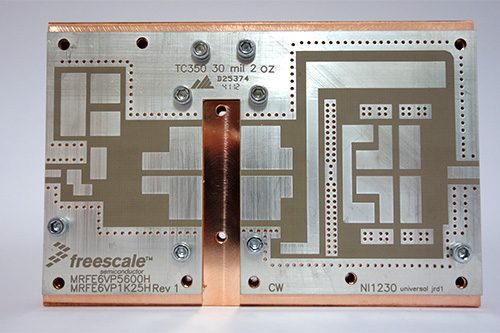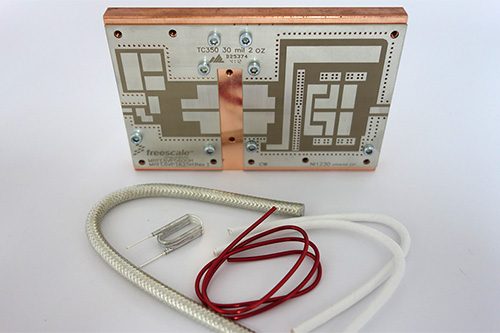Nowadays, every household has at least one paper printer for everyday use. As a radio amateur, a 3D printer is also essential and helpful. I’d been toying with the idea of purchasing one for a long time, and now the time has come.
Today, after a good four weeks, I can’t imagine life without it. Whether it’s a finished file from the internet that’s being printed, or a self-constructed housing, a mount, or a broken plastic part that needs to be reconstructed because it’s no longer commercially available.
Category Archives: Equipment
Expanding my small EME-Dish Antenna
Working via the moon on 23cm with my small, 1.75m diameter dish is possible, but sometimes difficult. Stations with a dish diameter of 3.0m and above were easy to work with, as were smaller ones down to 1.8m, provided they were optimally configured.
In recent months, the popularity of foldable 2.4m dishes has increased significantly. These antennas are equipped with a disc patch feed and a 90° hybrid coupler to provide circular polarization. To switch between LHCP and RHCP, a power relay and a set of cables are required. This combined effect causes noticeable losses. During EME experiments with such stations, I noticed that they are significantly weaker and less sensitive than comparable 2.4m stations equipped with septum feeds. For this reason, it was often very difficult, if not impossible, to complete a successful QSO with them.

Therefore, I decided that it was time to enlarge my solid 1.75m dish. First, the parabola was calculated and a template was created for the new intended size. Enlarging the dish results in a reduction in the f/D (focus/diameter). As a compromise, I opted for a new diameter of 2.35m, which corresponds to an f/D of 0.31 (previously 0.38). Good illumination with the existing septum feed is still given. The calculated additional gain resulted 2.5 dB for received signals and about 5.0 dB for my own EME echoes.
After completing the expansion, solar noise measurements showed an increase of Sun noise between 2.5 and 3.0 dB, which corresponds to the calculations. This was also noticeable in practical operation; stations with folded 2.4m dishes as well as stations with Yagi antennas can now also be worked, provided they are well optimized.

2024 Tokyo Ham Fair
In addition to the large amateur radio fairs in Friedrichshafen / Germany and Dayton / USA, the Tokyo Ham Fair in Japan is by far the largest of these exhibitions. In 2024, it recorded a new record with around 45,000 visitors.
I had long planned to travel to Japan and visit the Ham Fair. This year, it finally worked out. The new exhibition hall “ARIAKE GYM-EX” is located directly on the Pacific and is convenient and easy to reach by public transport.
The following pictures give a small impression of this great exhibition.
It was a great pleasure for me to meet many well-known DX’ers in person and to make new friends.
See you in Tokyo or see you again on one of the amateur radio bands.
2m SSPA – Part 1
After my previous homemade 2m Pa with 2x 4CX250B (build around 1975) is getting old, it was time to think about a new “state of the art” amplifier. Transistorized, high power, a low noise blower and all at an affordable price – that would be nice.
In an article of F1JRD, published in Dubus magazine 4/2010, I found the description of a compact (PCB 12 x 7 cm) 2m power amplifier with a Freescale LDMOS transistor. The tremendous gain of about 27 dB, more than 1.000 watts output power, combined with a relatively little effort, was fascinating.
After a longer search in the Internet I decided to build this project and started to assemble the main components. I ordered a BLF578 transistor at ebay, components from France and the copper heatsink from the Netherlands.









































